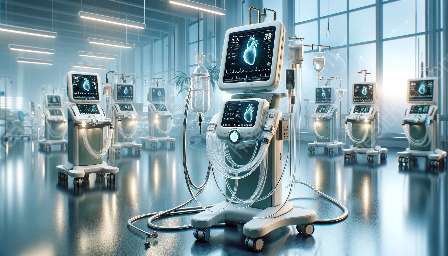Echocardiography machines play a pivotal role in the field of cardiovascular devices and medical equipment. They are instrumental in providing detailed and accurate imaging of the heart, contributing significantly to the diagnosis and treatment of cardiac conditions.
Understanding Echocardiography Machines
Echocardiography, also known as echo or cardiac ultrasound, is a diagnostic tool that utilizes high-frequency sound waves to create images of the heart. Echocardiography machines are specially designed to capture and display detailed images of the heart's structures, including the chambers, valves, and blood vessels. These machines are essential for evaluating cardiac function, detecting abnormalities, and monitoring the progression of heart diseases.
There are several types of echocardiography machines, including:
- Transthoracic Echocardiography (TTE): This is one of the most common types of echocardiography, where the transducer is placed on the patient's chest to obtain images of the heart through the chest wall.
- Transesophageal Echocardiography (TEE): In TEE, a specialized probe is inserted into the esophagus to obtain clearer images of the heart from inside the body.
- Stress Echocardiography: This type involves performing echocardiography before and after exercise or medication-induced stress to assess the heart's function under stress conditions.
- Three-Dimensional Echocardiography: This advanced technique provides three-dimensional images of the heart, offering enhanced visualization and detailed assessment of cardiac structures.
The Role in Cardiovascular Devices
Echocardiography machines serve as a cornerstone in the development and refinement of cardiovascular devices. By providing detailed anatomical and functional information about the heart, these machines play a vital role in guiding the design and assessment of cardiovascular devices such as pacemakers, defibrillators, and cardiac monitoring systems. Echocardiography helps in the precise placement of these devices and allows for real-time monitoring of their effects on cardiac function.
The integration of echocardiography with cardiovascular devices has led to the development of innovative technologies, such as intracardiac echocardiography (ICE), which enables real-time visualization of devices within the heart during minimally invasive procedures.
Advancements in Medical Devices & Equipment
Echocardiography machines represent a significant advancement in medical devices and equipment, particularly in the field of cardiac imaging. The continuous evolution of echocardiography technology has resulted in portable and handheld devices that offer high-quality imaging capabilities, allowing for point-of-care diagnostics and remote monitoring. These advancements have revolutionized cardiac imaging by making echocardiography more accessible and efficient.
Moreover, the incorporation of advanced software and artificial intelligence algorithms into echocardiography machines has further enhanced their diagnostic accuracy and workflow efficiency, contributing to improved patient care and outcomes.
The Future of Echocardiography Machines
As technology continues to advance, the future of echocardiography machines holds great promise. Miniaturization of equipment, improved image resolution, and increased automation are anticipated trends that will further enhance the capabilities of echocardiography machines. Additionally, the integration of echocardiography with other imaging modalities, such as computed tomography (CT) and magnetic resonance imaging (MRI), is expected to provide comprehensive multimodal assessment of cardiac structure and function.
The ongoing research and development efforts in echocardiography aim to expand its applications beyond traditional cardiac imaging, including the assessment of peripheral vascular disease, pulmonary hypertension, and congenital heart anomalies. This holistic approach will position echocardiography machines as versatile diagnostic tools in the field of cardiovascular and general medicine.


